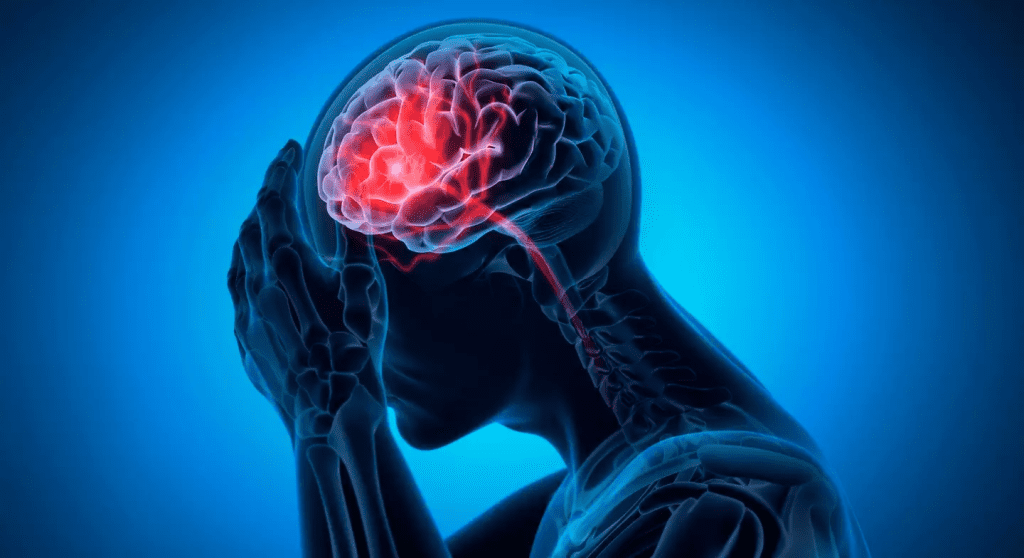Every minute counts when it comes to strokes. This life-threatening medical event, occurring every five minutes in the UK, requires immediate intervention to minimize brain damage and increase the chances of recovery. With around 100,000 strokes happening annually and 1.3 million survivors in the UK alone, recognizing the warning signs could mean the difference between life and death for someone experiencing a stroke.

A stroke happens when blood flow to a part of the brain is interrupted, either by a clot (ischemic stroke) or by a bleed within the brain (hemorrhagic stroke). Without oxygen-rich blood, brain cells begin to die, leading to potentially long-term consequences on speech, movement, and overall quality of life. Although anyone can experience a stroke, certain groups, including those over 50, people from Black or South Asian backgrounds, and individuals with unhealthy lifestyles, face an elevated risk.
Here are the six critical symptoms to watch for if you suspect someone may be having a stroke. Knowing these signs and acting quickly could save a life.
1. Difficulty Speaking or Understanding Speech
One of the earliest and most common signs of a stroke is trouble with speech. If a stroke impacts the brain’s language centers, it can disrupt the pathways that allow for clear communication. This may present as:
- Slurred Speech: The person may struggle to articulate words, causing their speech to sound garbled or slow.
- Word-Finding Issues: They may find it hard to remember specific words or phrases, leading to pauses or incomplete sentences.
- Difficulty Understanding: Sometimes, a stroke affects comprehension, making it challenging for the person to follow a conversation or respond appropriately.
If you notice someone suddenly struggling to speak or understand, ask them simple questions. If they cannot answer or their speech is noticeably impaired, call for emergency help immediately.
2. Sudden, Severe Headache
A severe headache, often described as the worst headache of one’s life, can be a symptom of a hemorrhagic stroke, which occurs due to bleeding within the brain. The bleeding increases pressure inside the skull, causing sudden, intense pain. This headache may be accompanied by other signs, such as nausea, vomiting, or a stiff neck.
If someone complains of a sudden and extreme headache, especially if it comes with other stroke symptoms, seek medical attention without delay. While headaches are common and typically harmless, a sudden and severe headache, especially when coupled with other neurological symptoms, could signal a stroke.
3. Sudden Numbness or Weakness
Another well-known warning sign of a stroke is sudden numbness or weakness, often on one side of the body. This can affect the face, arm, leg, or a combination of these areas. Here’s what to look for:
- Face Drooping: Ask the person to smile. If one side of their face droops or appears uneven, this could indicate a stroke.
- Arm Weakness: Ask the person to raise both arms. If one arm drifts downward or cannot be lifted, this is another red flag.
- Leg Weakness: Difficulty lifting or moving one leg can also signal a stroke, particularly if it’s on the same side as other symptoms.
This weakness happens when the stroke blocks or restricts blood flow to areas of the brain that control movement and sensation. If someone experiences sudden numbness or weakness, especially on one side, call for emergency medical help immediately.
4. Vision Problems

A stroke can also disrupt vision by affecting the brain’s visual pathways. Vision changes may include:
- Blurred Vision: Objects may appear out of focus or hazy.
- Double Vision: The person may see two images of a single object.
- Partial or Complete Loss of Vision: This could occur in one or both eyes and may come on suddenly.
If someone suddenly complains of vision issues, don’t dismiss it as a minor problem, especially if other symptoms are present. Vision problems during a stroke can occur without warning and may disappear briefly, but they should never be ignored.
5. Difficulty Walking
Stroke-induced difficulty walking is more than just weakness or numbness. If a stroke affects the parts of the brain that control balance and coordination, it can impair a person’s ability to walk or stand steadily. Symptoms include:
- Leg Paralysis or Weakness: The affected leg may feel too weak to support weight, or the person may struggle to lift their leg entirely.
- Loss of Coordination: The person might stumble, sway, or lose balance unexpectedly.
- Impaired Balance: Stroke affecting the cerebellum, which controls balance, may cause dizziness or a sense of spinning (vertigo).
If someone suddenly becomes unable to walk or maintain balance, even for a moment, this could signal a stroke. Getting them to medical assistance quickly is crucial.
6. Dizziness or Loss of Balance

Dizziness or vertigo can also be a warning sign of a stroke, particularly if it accompanies other symptoms. If a stroke impacts the brain regions responsible for balance and spatial orientation, the person may experience:
- Unsteady Movements: A person may sway or stumble without explanation.
- Vertigo: They might describe the sensation of spinning or feeling off-balance, even when still.
- Coordination Problems: Simple movements, such as reaching for an object, may become challenging.
Dizziness or loss of balance may seem less serious than other symptoms, but if it appears suddenly and is accompanied by other stroke signs, take it seriously. Immediate medical intervention is critical to prevent further complications.
Act F.A.S.T. to Save a Life
In addition to knowing these six warning signs, remember the acronym F.A.S.T., a simple guide for recognizing stroke symptoms:
- F – Face: Ask the person to smile. Does one side droop?
- A – Arms: Ask them to raise both arms. Does one arm drift downward?
- S – Speech: Listen for slurred or strange speech. Can they repeat a simple sentence correctly?
- T – Time: If you notice any of these symptoms, time is critical. Call emergency services immediately.
Conclusion: Recognize the Signs and Act Quickly
A stroke can be life-altering, but knowing the signs and symptoms can help save lives and reduce the impact of brain damage. By recognizing speech difficulties, sudden headaches, numbness, vision problems, walking difficulties, and dizziness, you’re more equipped to act quickly and call for emergency help. Remember, every minute counts when it comes to a stroke. Acting fast can mean the difference between a full recovery and long-term impairment. Familiarize yourself with these signs, and share this knowledge—it could make all the difference when every second matters.


